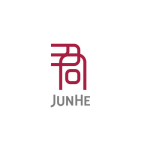Since the 1990s, all the financial institutions in China's loan market have determined their interest rate by floating up or down certain proportions of the benchmark interest rate announced by the People's Bank of China (PBOC Base Rate). Because the PBOC Base Rate is not closely aligned to the immediate supply-demand dynamics and also because it lacks a transparent pricing calculation formula, the PBOC Base Rate is generally considered as an administrative guidance price rather than a market-oriented price.
In the second half of 2019, the PBOC issued [2019] Notices 15 and 30 aiming to reform and improve the loan prime rate (LPR) mechanism debuted in October 2013. The Notices stipulated that the facility interest rate must be quoted by reference to the LPR, which is calculated on the basis of the LPR quotations submitted by 18 quotation banks on the 20th of every month.
The reformed LPR appears to be more reasonable. For example, the quotation banks cover a more varied type of banks, including national banks, urban commercial banks, rural commercial banks and foreign banks. However, over decades of implementation of the PBOC Base Rate, all financial institutions in China rely heavily on the guiding benchmark rate to price their own interest rate. A predominant, scientific and market-oriented pricing system is still absent in the open market, and even within the member groups of financial institutions, there is a low level of transparency in the rate pricing mechanism. As a result, the majority of the financial institutions in the China market now face an unusual dilemma: on the one hand they have no clue as to how to quote a proper interest rate, and on the other, they have strong doubts about how the final LPR formed on the basis of quotations could reflect their actual funding costs and the loan price. This dilemma casts a shadow over the future of the LPR.
Seeking innovation is the best way to escape the existing situation. On the one hand, financial institutions urge the establishment via fintech of a scientific pricing mode. On the other hand, in order to prevent to the extent possible the variable risk in medium and long-term facilities, it would be advisable to perfect the provisions related to market interest rate (for example, to add a market disruption definition, a flexible pricing adjustment mechanism, and so on) and strive for more bargaining powers in the financing documents.

|
Joey Lu |


